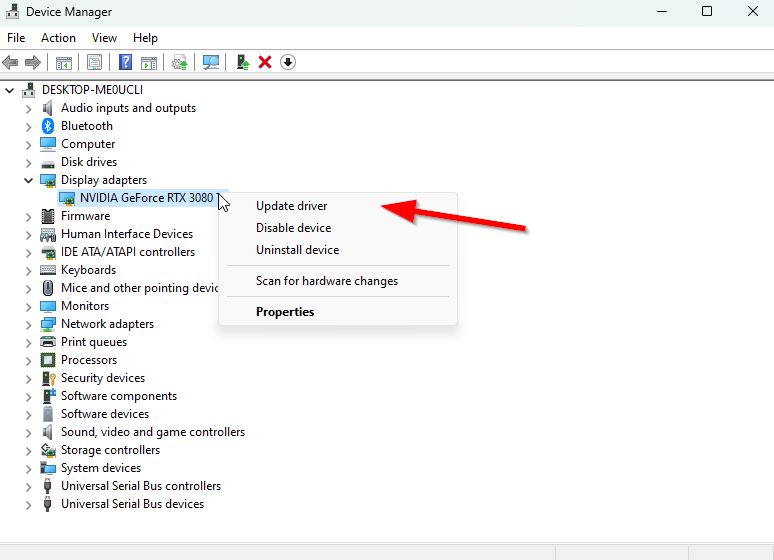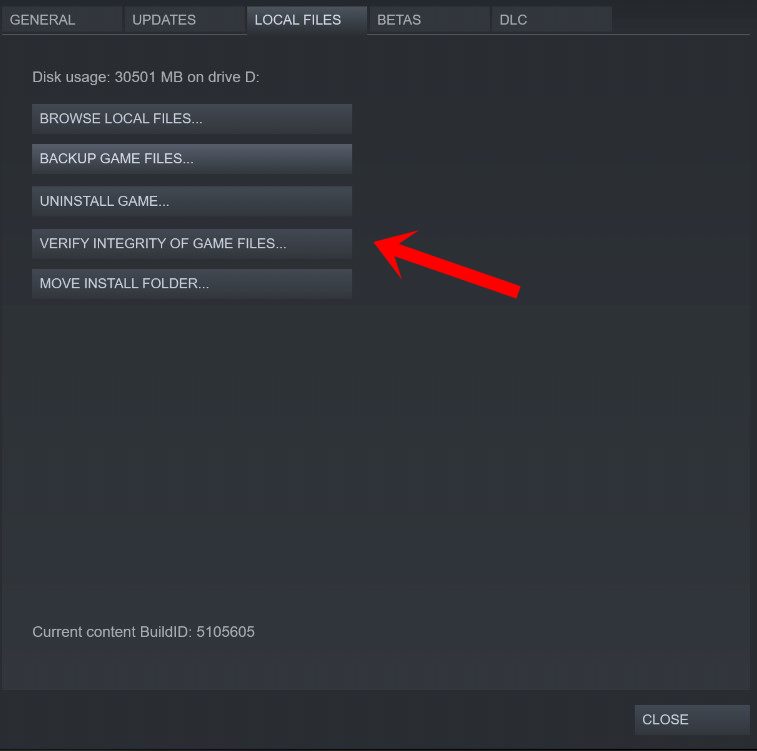When it comes to the free-to-play online battle-royale hero shooter video game, Apex Legends is one of the popular titles in the market right now that offers a great gaming experience with stunning visuals. It requires better hardware and optimized in-game settings to provide the best performance without losing the quality that much. So, you can check the Apex Legends Best Graphics Settings for Nvidia 3070, 3080, 3090, 1060, 1070, 2060, 2080, and More.
Here we’ve mentioned the possible Apex Legends PC settings to get the best performance and optimized gameplay experience on all Nvidia graphics cards from entry-level to premium. Obviously, your PC hardware should be capable enough to be able to run the Apex Legends game properly. But some additional in-game graphics adjustments or launch command arguments may help you to get much smoother gameplay with a higher FPS count.
Also Read
Fix: Apex Legends Keeps Crashing on Startup on PC
Fix: Apex Legends PC Stuck on loading screen
Fix: Apex Legends Stuttering, Lags, or Freezing constantly
Fix: Apex Legends Voice Chat Not Working on PC, PS4, PS5, Xbox One, Xbox Series X/S
Fix: Apex Legends Ranked Arena matchmaking broken
Fix: Apex Legends Matchmaking Too Slow or Taking Long to Load
Best Bottleneck Calculators for PCs in 2023
How to Fix Apex Legends Matchmaking Not Working
Fix: Apex Legends Disconnected Detected Data Mismatch Error
10 Best Fixes for Apex Legends Screen Flickering or Tearing Issue on PC (2023)

Page Contents
- Apex Legends Best Graphics Settings for 4070, 4060, 4090, 3070, 3080, 3090, 1060, 1070, 2060, 2080, and More
- 1. Check System Requirements
- 2. Get a Minimum of 60 FPS with Optimal Graphics Settings
- 3. Adjustments for Nvidia Control Panel
- 4. Nvidea GeForce Experience App Adjustments
- 5. Update Graphics Drivers
- 6. Switch to Dedicated GPU
- 7. Verify and Repair Game Files
- 8. Try Disabling Overlay Apps
- 9. Update Apex Legends
Apex Legends Best Graphics Settings for 4070, 4060, 4090, 3070, 3080, 3090, 1060, 1070, 2060, 2080, and More
The chances are high that multiple PC gamers are encountering a lower FPS count during the gameplay sessions or some visual glitches that eventually reduce gaming performance. Even though you’re using the high-end gaming PC build along with the Nvidia RTX 20/30 series graphics card, you may not get the ultimate performance in some scenarios due to the non-optimized graphics settings.
Whereas if you’re on a budget PC gamer or using a mid-range gaming rig, you might have to sacrifice the graphics quality to some extent to get the higher performance and the increased framerate count on average. In that scenario, the optimized in-game settings should come in handy. As Intel CPUs aren’t powerful enough in terms of integrated HD graphics as compared to AMD CPUs, you’ll have to use an external Nvidia GPU to power it up.
If we deeply dive into the optimal framerate count, then 60 FPS on average is sufficient for a smoother gaming experience on PCs. But you’ll have to reduce the graphics quality and some other in-game visual settings to achieve 60FPS in overall for the lower-end Nvidia graphics cards like GTX 1060/1070, etc. But the RTX 2060/2070/2080 or RTX 3070/3080/3090/3090Ti graphics cards have enough power to get 100+ FPS in 1080p/2K resolution.
For the 2K and 4K resolution quality, achieving higher FPS is always the ice on the cake because you can easily increase it by tweaking settings as per your preference. As you’re now aware of the details, let’s get into it.
Also Read
1. Check System Requirements
Before heading over to the optimized settings, it’s recommended to check the game’s system requirements. If your PC configuration isn’t compatible with the requirements then you should upgrade the necessary component. If your PC build is meeting all the requirements then make sure to skip to the next method.
Minimum:
- OS: 64-bit Windows 7
- Processor: AMD FX 4350 or Equivalent, Intel Core i3 6300 or Equivalent
- Memory: 6 GB RAM
- Graphics: AMD Radeon HD 7730, NVIDIA GeForce GT 640
- DirectX: Version 11
- Network: Broadband Internet connection
- Storage: 56 GB of available space
- Additional Notes: ~3.8GB for 1 localized language
Recommended:
- OS: 64-bit Windows 7
- Processor: Ryzen 5 CPU or Equivalent
- Memory: 8 GB RAM
- Graphics: AMD Radeon R9 290, NVIDIA GeForce GTX 970
- DirectX: Version 11
- Network: Broadband Internet connection
- Storage: 56 GB of available space
- Additional Notes: ~3.8GB for 1 localized language
According to the requirements, you can see that you’ll require at least Nvidia GT 640 (minimum) and GTX 970 GPU has been recommended right now. So, if you’re using Nvidia GeForce GT 640 GPU or higher then you should be able to run Apex Legends on the PC properly. The higher the PC configuration and the graphics card you’ll use, the more performance & graphics quality you’ll achieve.
Please Note: Even if your Nvidia GPU card model isn’t listed here, you don’t need to worry about it. There are plenty of graphics card models compatible with the Apex Legends game that can give you optimal 60 FPS with 1080p resolution. But the minimum criteria should be matched.
2. Get a Minimum of 60 FPS with Optimal Graphics Settings
By following the tweaks below you’ll be able to get at least 60 FPS gameplay with your budget graphics card. While the mid-range and top-tier graphics cards will offer higher performance for sure even if you hit 2K/4K resolution. Some in-game graphics or shadow adjustments won’t affect any major visual changes but definitely increase the framerate count.
- Display mode: Full Screen
- Aspect Ratio: 16:9 or 21:9 (native) whatever native aspect ratio your monitor is using
- Resolution: 1920×1080 (native) whatever native resolution your monitor is using
- For older monitors, you can also select 720p or 960p resolution
- V-Sync: Disabled
- FOV Ability Scaling: Disabled
- Sprint View Shake: Minimal
- Nvidia Reflex: Enabled+Boost
- Anti-Aliasing: None
- Texture Streaming Budget: Lowest Setting
- Texture Filtering: Anisotropic 2X
- Ambient Occlusion Quality: Disabled
- Sun Shadow Coverage: Low
- Sun Shadow Detail: Low
- Spot Shadow Detail: Off
- Volumetric Lighting: Disabled
- Dynamic Spot Shadows: Disabled
- Model Detail: Low
- Effects Detail: Low
- Impact Marks: Low
- Ragdoll: Low
3. Adjustments for Nvidia Control Panel
You can head over to the Nvidia Control Panel application and try performing the following adjustments to ensure your game will run slightly better without screen tearing.
- Just open Nvidia Control Panel > Go to Manage 3D Settings > Click on Program Settings.
- Then click on Add: C:\Program Files(x86)\Steam\steamapps\common\Apex Legends > Select r5apex.exe.
Now, you can adjust the following settings accordingly or as per your requirement to get a more improved gaming experience than before.
- Image Sharpening: NVIDIA recommended (Sharpen: 0.50 Ignore Film Grain: 0.17)
- Anisotropic filtering: Application-controlled
- Antialiasing – FXAA: Off
- Antialiasing – Gamma correction: On
- Antialiasing – Mode: Application-controlled
- Antialiasing – Transparency: Off
- Background Application Max Frame Rate: Off
- CUDA – GPUs: All
- Max Frame Rate: Off
- Monitor Technology: G-Sync
- Multi-Frame Sampled AA (MFAA): Off
- OpenGL rendering GPU: Auto-Select
- Power management mode: Max Performance
- Preferred Refresh rate: Highest Setting
- Shader Cache: On
- Texture filtering – Anisotropic sample optimization: On
- Texture filtering – Negative LOD bias: Allow
- Texture filtering – Quality: High Performance
- Texture filtering – Trilinear optimization: On
- Threaded optimization: On
- Triple buffering: Off
- Vertical Sync: Off
- Virtual Reality pre-rendered frames: 1
4. Nvidea GeForce Experience App Adjustments
It’s also worth mentioning to turn off both the GeForce Experience Overlay and Nvidia Shield Gamestream option so that you can get better performance.
- Open Nvidia GeForce Experience > Click on Settings.
- Go to General > Disable In-Game Overlay.
- Go back to Settings > Click on Shield > Turn Off Gamestream.
5. Update Graphics Drivers
You should try checking for the graphics driver update on your Windows PC and installing the latest version to ensure no update is pending at your end. An outdated or missing graphics driver can trigger issues with properly functioning graphics-intensive programs. To do that:
- Right-click on the Start Menu to open up the Quick Access Menu.
- Click on Device Manager from the list to open the interface.
- Now, you’ll need to double-click on Display adapters to expand it.

- Then right-click on the dedicated graphics card name you’re using to bring the context menu.
- Next, click on Update driver > Choose Search automatically for drivers.
- The system will automatically check for the available update.
- If an update is available, it’ll automatically download and install the latest version.
- Once done, make sure to restart your PC to apply the changes.
If you can’t find any pending updates then just head over to the official website of the Nvidia website below and search manually for the latest update. If a new version is available for the graphics card, just download the driver and install it on your PC. You can jump to the link below to do so:
6. Switch to Dedicated GPU
Sometimes the game may run with the integrated HD graphics on the PC that comes with the processors to handle minimal graphics tasks. But if you’re using an external Nvidia graphics card then make sure to switch the Apex Legends game to the dedicated GPU by following the steps below.
- Right-click on the desktop screen to open the context menu.
- Now, click on Nvidia Control Panel to open it.
- Head over to 3D Settings > Select Manage 3D Settings.
- Open the Program Settings tab > Choose Apex Legends from the drop-down menu.
- Next, select the preferred graphics processor for this program from another drop-down menu.
- Finally, your Nvidia GPU should show as High-Performance Nvidia Processor.
- Save the changes and reboot the PC.
7. Verify and Repair Game Files
The chances are high that somehow your game files are missing or corrupted on the PC which eventually conflicts with the game running properly. You may not receive errors or warning messages that’s why you won’t understand what’s going on. It’s better to perform repairing game files on the PC. To do so:
- Launch the Steam client > Click on Library.
- Right-click on Apex Legends from the list of installed games.
- Now, click on Properties > Go to Local Files.

- Click on Verify Integrity of Game Files.
- You’ll have to wait for the process until it gets completed.
- Once done, just restart your computer.
8. Try Disabling Overlay Apps
Sometimes a couple of applications may come with an additional overlay app that basically helps the streamers or gamers a lot. However, these overlay apps can eventually conflict with the game files to run smoothly and may cause several issues like FPS drops, black screen issues, lags, glitches, etc. You should try disabling the overlay apps manually before launching the game again to cross-check if the game is running with higher FPS or not. To do so:
Disable Discord Overlay:
- Launch the Discord app > Click on the gear icon at the bottom.
- Select Overlay under App Settings > Turn on the Enable in-game overlay.
- Click on the Games tab > Select Apex Legends.
- Finally, Turn Off the Enable in-game overlay toggle.
- Make sure to reboot your PC to apply changes.
Disable Xbox Game Bar:
- Press the Windows + I keys to open Windows Settings.
- Click on Gaming > Go to Game Bar > Turn off Record game clips, screenshots, and broadcast using the Game bar option.
Disable Nvidia GeForce Experience Overlay:
- Launch the Nvidia GeForce Experience app > Head over to Settings.
- Click on the General tab > Disable the In-Game Overlay option.
- Finally, restart the PC to apply changes, and launch the game again.
Disable Steam Overlay:
- Open the Steam client on the PC > Click on Library.
- Right-click on Apex Legends from the left pane > Select Properties.
- Now, click on General > Turn OFF the ‘Enable the Steam Overlay while in-game’ option.
There are some other overlay apps that can cause trouble for you something as MSI Afterburner, Rivatuner, RGB software, etc. You should turn them off as well.
9. Update Apex Legends
Mostly an outdated game patch version may trigger multiple potential issues with the game running as well as smoother gameplay. You should install the latest update to make the game compatible with fewer bugs whatsoever. To do that:
- Open the Steam client > Go to Library.
- Click on Apex Legends from the list of installed games on the left pane.
- Now, the client will automatically search for the available update.
- If there is an update available, you’ll see the Update option.
- Just click on it and wait for a couple of minutes until the game update completes. [Depends on the storage space and internet connectivity]
- Once done, make sure to close the Steam client.
- Finally, reboot your PC to apply changes
Bonus: If you don’t want to mess with the in-game graphics settings, you can open the Nvidia GeForce Experience app, and click on Optimize to get the optimized Apex Legends Settings immediately without manually adjusting graphics options.
That’s it, guys. We assume this guide was helpful to you. For further queries, you can comment below.
